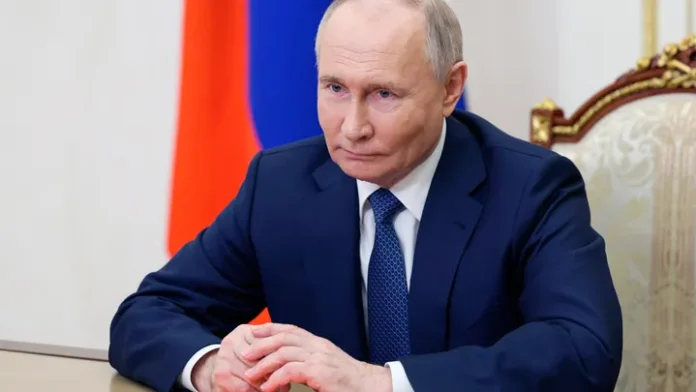A fleet of Russian warships entered Cuban waters on Wednesday, marking a significant geopolitical maneuver as they prepare for military drills in the Caribbean. This deployment is widely seen as a direct warning to President Biden, following his approval for Ukrainian forces to strike certain targets within Russia using U.S. weaponry. According to Rebekah Koffler, strategic intelligence analyst and author of “Putin’s Playbook,” Russian President Vladimir Putin is signaling to Washington, “we can touch you.”
Koffler explained that Putin wants to position his forces close to the U.S. at a time when the Russia-Ukraine conflict is highly escalated, especially in light of Biden’s authorization for Ukraine. She suggested that if Ukraine were to strike critical targets in Russia near major cities, the Russian military could potentially enable Cuban forces to strike targets within the U.S. or target U.S. interests.
The arrival of the Russian fleet in Havana Bay included three warships, greeted by a 21-cannon salute. Additionally, a nuclear-powered submarine, the Kazan, was expected to follow, though Russia has asserted that the submarine is not carrying nuclear weapons.
This move comes after Putin hinted that he might authorize strikes on the U.S. via proxy countries, mirroring the U.S.’s strategy in Ukraine. The deployment underscores the tensions between Moscow and Washington, particularly regarding military engagements and geopolitical influence in neighboring regions.
Benjamin Gedan, director of the Latin America program at the Wilson Center, commented that the warships serve as a stark reminder to Washington about the discomfort of having an adversary meddle in one’s near abroad. This deployment also reinforces Russia’s support for its allies in the region, including U.S. adversaries Cuba and Venezuela.
Last week, Putin made a direct threat to supply weapons to neighboring countries of the U.S., posing a rhetorical question: “If [the U.S.] considers it possible to deliver such weapons to the combat zone to launch strikes on our territory and create problems for us, why don’t we have the right to supply weapons of the same type to some regions of the world where they can be used to launch strikes on sensitive facilities of the countries that do it to Russia?”
This escalating rhetoric and military posturing follow President Biden’s late May approval for Ukraine to use American missiles against targets on Russian soil. Ukraine has faced a grueling battle of attrition against Russian forces, struggling to achieve significant breakthroughs with its counterattacks. In a controversial decision, Biden also approved the use of U.S.-provided weaponry by Ukraine’s Azov Battalion.
The deployment of Russian warships to Cuba has raised alarm bells among U.S. defense analysts and policymakers, who see it as a provocative step in the already tense U.S.-Russia relations. The presence of the nuclear-powered submarine Kazan, even without nuclear weapons, adds a layer of strategic complexity to the situation, potentially altering the military dynamics in the region.
Koffler and other experts emphasize that this move is not just a show of force but a strategic placement designed to remind the U.S. of its vulnerability and to challenge American influence in the Western Hemisphere. It signals Moscow’s intent to leverage its military capabilities to exert pressure on Washington and its allies, amid ongoing conflicts and geopolitical strife.
The situation is a stark reminder of the delicate balance of power and the potential for escalation in the current global landscape. As Russia continues to assert its military presence in strategic locations, the international community watches closely, aware that any miscalculation or aggressive action could have far-reaching consequences.























